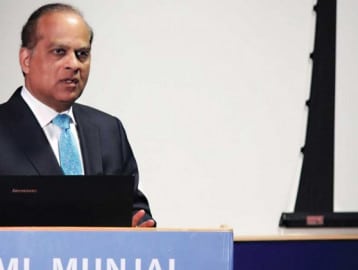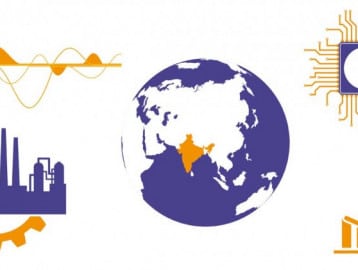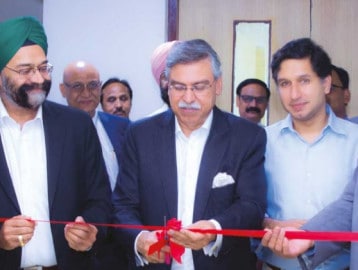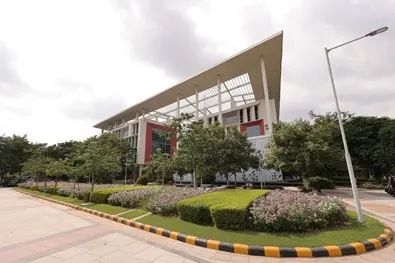Blogs


WHAT MR. MODI SHOULD DO

It’s been more than a year since Mr. Modi was triumphantly installed as India’s PM. Euphoric expectations of rapid economic growth permeated throughout India and the world. The administration’s initial set of actions with a focus on good governance and domestic manufacturing have been welcome. However, in my opinion, these have been baby steps at a time when giant strides are needed to realise the expectations that India rightfully deserves.
Why? Why do the challenges facing India call for dramatic policy changes? To gain a perspective, consider the global landscape of economic well-being: India’s per capita GDP is about $1,500, China about $6,000, Mexico about $10,000, S. Korea about $22,000, and the US about $54,000! This is a mind-boggling range and may surprise many.
The challenge of uplifting the per capita income of Indians is all the more formidable because India’s population is 1.3 billion and counting. The magnitude of the challenge clearly depends on the aspired level of income. If the goal were to catapult India’s per capita income to $5,000 in ten years, this will require
about 13-14% annual growth in GDP.
Only game-changing policies, not mere tweaks could possibly produce double digit growth rates. Sustained implementation is also necessary. Noticeable progress won’t come about overnight. China grew from a few hundred dollars per capita in the late seventies to about $6,000 today in about 30-35 years. To catch up, Mr. Modi must implement dramatic changes with alacrity and the changes should characterise permanence. Here’s my top-ten list.
-
- Arrest population growth without coercion, but with incentives
India’s population is growing by 17 million people every year! Even good economic efforts are doomed to fail unless population growth is arrested. A sensible alternative is to offer economic incentives tied to education, timing and number of childbirths.
-
- Welcome FDI, no strings attached, please!
Growth without investment is a mirage. Growth is achieved through re-invested savings, productivity enhancements, and FDI. Even with India’s high savings rate, and assuming continued improvements in productivity, economic growth beyond 5-8% would be a challenge. Additional growth to reach double digits can come from FDI.
-
- Empower people, decentralize
Compared to Europe, the US and many other developed countries, decision-making in India is horribly centralised. The average population of a state in the US is about 6 million compared to about 40-100 million in India. Consider states like UP with 200m, Maharashtra with 115m, Bihar with 101m, and Gujarat with 65 m people!
To achieve distributed local governance, reorganise India into at least 100 states. Further, even within those states, greater devolution of power is essential to make the government of the people, by the people, and for the people.
-
- Privatise the public sector using a radically different approach
Notwithstanding an expressed desire and repeated policy pronouncements, privatisation of the public sector has been an elusive goal for successive administrations. The perniciousness of the challenge is rooted in the resistance from the public-sector employees (who stand to lose their life-time employment with minimal merit-based performance assessment).
Piecemeal sale of ownership interest in public sector organisations without a change in the government’s management of these organisations is of little value in making the public sector efficient. While outright sale of PSUs is the best (elusive) solution, a pragmatic alternative would be to turn over public sector institutions to their respective employees! This seems drastic, but it’s attractive. It would overcome much of the employee resistance, it would be expeditious, and it would harness efficiency gains.
-
- Laws are meant to be enforced
Property rights and law enforcement are the cornerstone of economic development. Investment, especially FDI, is highly sensitive to respect for property rights and speedy and fair resolution of contract disputes.
The administration’s commitment to law enforcement can be signalled by dramatically increasing the number of judges, prosecutors and the size of the police force. India’s law enforcement personnel number is about 130 per 100,000 population compared to Mexico’s 366 and UK’s 307.
-
- Reform securities laws
Efficient securities markets are essential for capital formation and growth. Hallmarks of a good securities market are transparency, liquidity, and an active market for corporate control. India’s securities laws should be overhauled to promote an active market for corporate control (i.e., market for mergers and acquisitions) and to make it easier to invest in Indian securities by Indians as well as foreigners.
-
- Put regulation on a diet
India needs a far less regulated economy with simplified laws and regulation governing domestic and international trade, foreign currency convertibility, foreign investment through mutual funds, foreign ownership of property, travel visas, etc. Travel visas might be a pet peeve of mine. Why does India require US or UK or Australian citizens a visa to enter India? Is it only to ensure reciprocity? How many citizens from these countries have attempted to enter India illegally? India’s policy of visas is nothing short of cutting your nose to spite the face! The excessive amount of regulation in India hinders economic progress.
-
- Monetary policy: Keep it independent
When the deficit and interest rates move in unfavourable directions, it’s tempting for the government to prod the RBI to alter its monetary policy. The politically-motivated changes in the monetary policy are rarely in the long-term interest of the economy. Therefore, it would be wise to reaffirm the independence of the Central Bank (RBI) and its monetary policy. The independence serves to rein in the government’s expenditure and fiscal deficit. More importantly, the policy infuses confidence in the market, which is conducive to investment and growth.
-
- Infrastructure and manufacturing investment
The Modi administration has placed a tremendous emphasis on manufacturing with the “Make in India” policy. Crucial to the success of whether it’s make in India or make for India is sound infrastructure – physical and soft. Manufacturing will not flourish until physical infrastructure, i.e., road, ports, electricity, coal, etc. is world class.
-
- Grandfather the past, look to the future
Every government sets out to undo individual past misdeeds – resist such temptation. Affected individuals’ resistance and appearance of partisanship almost certainly take the administration’s eye off the ball and work against economic growth. Instead, offer an amnesty period and opportunity for redemption for those who have committed actions that have been against the interest of growth and freedom. This gives individuals a chance to redeem themselves and become good citizens, without imposing punitive penalties.
Trending Blogs
-
6 Most Demanding Engineering Courses in Future (With Salary & Scope)
-
Top 20 High Salary Courses after 12th Science (PCM) 2025
-
Top 14 Career Options After LLB in India 2025
-
12 Fun Management Games For MBA Students
-
16 Prestigious Law Firms in India to Kickstart Your Career
Latest Blogs
-
Top 10 Reasons to Pursue a BCom Hons Degree
-
Choosing the Top B.Tech. College in Delhi NCR: Key Factors to Consider
-
Experience the Intersection of Legal Thinking & Business Leadership with Integrated BBA LLB Hons Course
-
How an Executive MBA Can Transform Your Leadership Career
-
Executive MBA vs. Full-Time MBA: Which Suits You Best?
-
How BTech Electronics & Computer Engineering Prepares You for the Next Tech Revolution
-
Why BBA Admission 2025 is the Smartest Move After Class 12th
-
How a BA in Liberal Arts Degree Prepares You to Lead in the Age of AI
-
Choosing the Right College for BCom Admission 2025: Key Differentiators to Watch For
-
BBA MBA Integrated Course: Your Pathway to Global Business Leadership
Related Blogs

CLUB Savera
Clubs and extracurricular activities are a cornerstone of student life at any University. In addition to academics, University life is meant to allow ...

CLUB I-Botics
Clubs and extracurricular activities are a cornerstone of student life at any University. In addition to academics, University life is meant to allow ...

LIVING ARTS
Every month, the performance arts club of BMU organises an on-campus Spic-Macay cultural activity. Spic-Macay is a voluntary movement that organises e...

BMU LEADERSHIP SERIES
The BMU Leadership Series is a fantastic opportunity for our students to be inspired and gain inputs from real-life achievers and industry leaders. In...

CUTTING EDGE RESEARCH
The field of Engineering is seeing some exciting developments through cutting-edge research. There is talk of 4-D printing where an object created thr...

BMU ties up with IBM for Business Analytics
Taking decisions based purely on a hunch is no longer an option in today's complex and unforgiving business environment. A lot of data including Big D...

